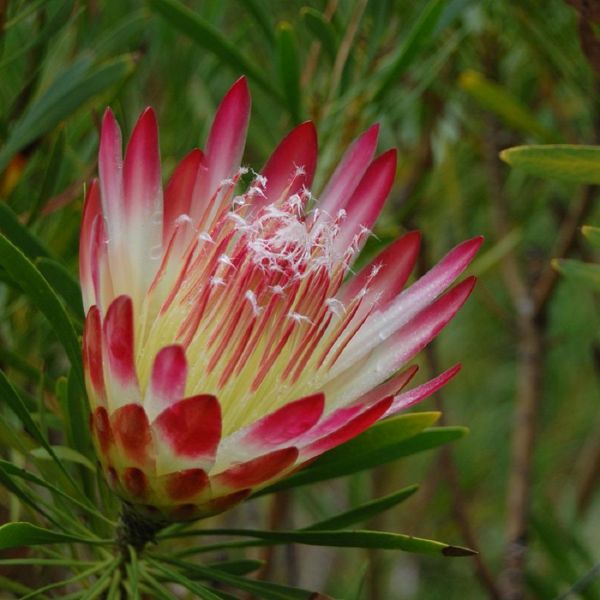Protea Repens Seeds (Sugarbush Protea Seeds)
Protea Repens Seeds (Sugarbush Protea Seeds)
A very ornamental plant. It looks wonderful in the garden and as a cut-flower in a tall vase, particularly when massed.
Availability: In stock
SKU
Protea Repens
Protea repens or commonly name Sugarbush, is the most widely distributed of all Protea. Although it mostly occurs on the flats, coastal forelands, lower and middle mountain slopes, it has been found at altitudes up to 1500 metres. The natural habitat of Protea repens is the Southern tip of South Africa. Protea repens is a small evergreen shrub which may grow to about 5 meters but is best kept at 2-3 meters in the garden. A very ornamental plant. It looks wonderful in the garden and as a cut-flower in a tall vase, particularly when massed.
Protea repens has quite hard, leathery leaves, which protect it against most insect attacks and not much damage is visible to the leaves, except from leave borders. The leaves are elliptic and narrow, usually greenish-yellow and about 13 cm by 1cm.
The shape of the flowers is very distinctive, chalice-shaped, and forms an ice-cream cone seedhead. The flower heads are actually clusters of tiny flowers surrounded by bracts. The pointed and sticky flower bracts are cream with the upper portions pink. The individual flowers inside vary in colour from pure white to pink to deep pink. The flowers are hermaphrodite, have both male and female organs and are pollinated by bees. Flowering all year round, depending on the locality.
The copious nectar produced by the flowers is loved by birds and was widely used for sugar and syrup production by South African colonists.
Bushes need to be pruned regularly to maintain their shape and promote flowers with long stems. When the shrub has finished flowering it is essential to cut off the old flowers. This will allow energy to be used for the growth of new stems at the end of which will be new flowers. It is best to cut the flowering stem back to about 10-12 cm from the preceeding branch.
Hardiness zone 9, (-5øC/25øF) in Winter. Protea repens is one of the easiest, most adaptable and reliable Protea in cultivation. It is tolerant of a wide range of soils, from heavy clay to deep white sand. Plants tolerate both coastal conditions and temperatures down to about -5øC, although prolonged frosts, or frosts combined with cold dry winds will cause damage.
The plant prefers light sandy soils. Requires well-drained soil and can grow in nutritionally poor soil. This Protea prefers acid soils and can grow in very acid soil. It requires dry or moist soil.
Those plants are very sensitive to nitrates and phosphates in the soil, these can prove toxic even at moderate levels. When fertilizing, use a product which contains no phosphorus. Plants may also suffer from magnesium deficiency. Grow with a pH of 5.0 - 5.5.
It cannot grow in the shade. Dislikes high humidity or windless days. Requires full exposure to the sun. Requires a position with good air circulation, but sheltered from cold winds.
| Common name | Sugarbush |
|---|---|
| Species | Protea repens |
| Germination | Smoke Seed Primer is ideal for treating seeds of Protea. You can purchase this in the Smoke Seed Primer category. You can also soak the seeds in hot water for a couple hours. Many wildflower seeds are dormant and need very specific conditions for germination. The smoke seed primer solution contains a combination of natural substances that overcome dormancy and stimulate seed germination. Germination requires 1 to 3 months at approximately 18ø-20øC. Germination can take longer, don't give up. |
| Price View | Price Range |

